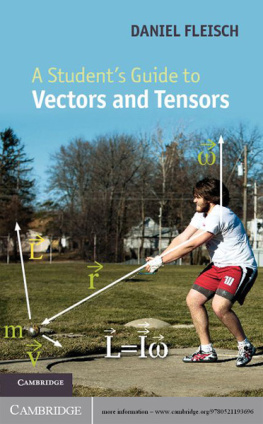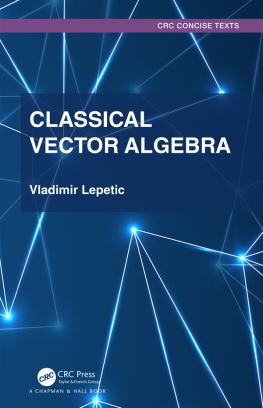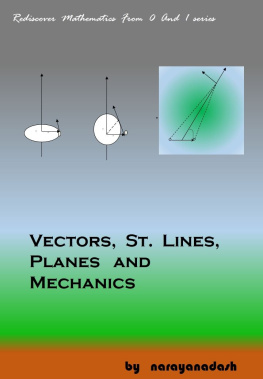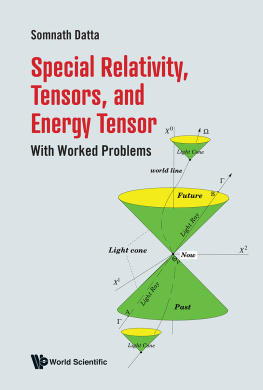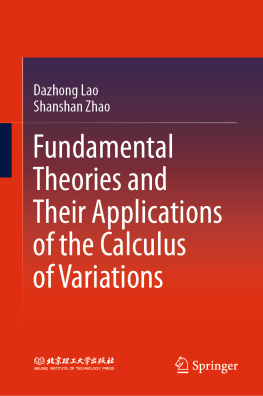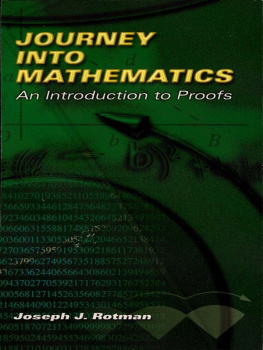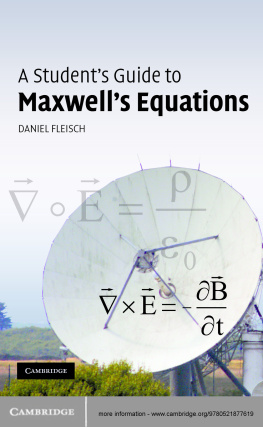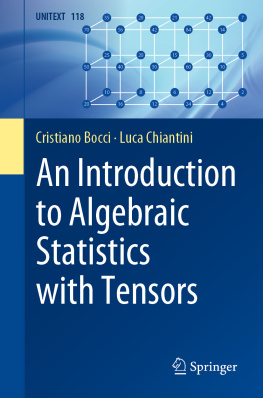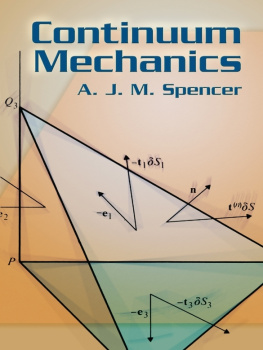
A Students Guide to Vectors and Tensors
Vectors and tensors are among the most powerful problem-solving tools available, with applications ranging from mechanics and electromagnetics to general relativity. Understanding the nature and application of vectors and tensors is critically important to students of physics and engineering.
Adopting the same approach as in his highly popular A Students Guide to Maxwells Equations, Fleisch explains vectors and tensors in plain language. Written for undergraduate and beginning graduate students, the book provides a thorough grounding in vectors and vector calculus before transitioning through contra and covariant components to tensors and their applications. Matrices and their algebra are reviewed on the books supporting website, which also features interactive solutions to every problem in the text, where students can work through a series of hints or choose to see the entire solution at once. Audio podcasts give students the opportunity to hear important concepts in the book explained by the author.
D A N I E L F L E I S C H is a Professor in the Department of Physics at Wittenberg University, where he specializes in electromagnetics and space physics. He is the author of A Students Guide to Maxwells Equations (Cambridge University Press, 2008).
CAMBRIDGE UNIVERSITY PRESS
Cambridge, New York, Melbourne, Madrid, Cape Town,
Singapore, So Paulo, Delhi, Tokyo, Mexico City
Cambridge University Press
The Edinburgh Building, Cambridge CB2 8RU, UK
Published in the United States of America by Cambridge University Press, New York
www.cambridge.org
Information on this title: www.cambridge.org/9780521171908
D. Fleisch 2012
This publication is in copyright. Subject to statutory exception and to the provisions of relevant collective licensing agreements, no reproduction of any part may take place without the written permission of Cambridge University Press.
First published 2012
Reprinted 2012
Printed and bound by CPI Group (UK) Ltd, Croydon CR0 4YY
A catalog record for this publication is available from the British Library
ISBN 978-0-521-19369-6 Hardback
ISBN 978-0-521-17190-8 Paperback
Additional resources for this publication at www.cambridge.org/9780521171908
Cambridge University Press has no responsibility for the persistence or accuracy of URLs for external or third-party internet websites referred to in this publication, and does not guarantee that any content on such websites is, or will remain, accurate or appropriate.
Preface
This book has one purpose: to help you understand vectors and tensors so that you can use them to solve problems. If youre like most students, you first encountered vectors when you took a course dealing with mechanics in high school or college. At that level, you almost certainly learned that vectors are mathematical representations of quantities that have both magnitude and direction, such as velocity and force. You may also have learned how to add vectors graphically and by using their components in the x-, y- and z-directions.
Thats a fine place to start, but it turns out that such treatments only scratch the surface of the power of vectors. You can harness that power and make it work for you if youre willing to delve a bit deeper to see vectors not just as objects with magnitude and direction, but rather as objects that behave in very predictable ways when viewed from different reference frames. Thats because vectors are a subset of a larger class of objects called tensors, which most students encounter much later in their academic careers, and which have been called the facts of the Universe. It is no exaggeration to say that our understanding of the fundamental structure of the universe was changed forever when Albert Einstein succeeded in expressing his theory of gravity in terms of tensors.
I believe, and I hope youll agree, that tensors are far easier to understand if you first establish a stronger foundation in vectors, one that can help you cross the bridge between the magnitude and direction level and the facts of the Universe level. Thats why the first three chapters of this book deal with vectors, the fourth chapter discusses coordinate transformations, and the last two chapters discuss higher-order tensors and some of their applications.
One reason you may find this book helpful is that if you spend a few hours looking through the published literature and on-line resources for vectors and tensors in physics and engineering, youre likely to come across statements such as these:
A vector is a mathematical representation of a physical entity characterized by magnitude and direction.
A vector is an ordered sequence of values.
A vector is a mathematical object that transforms between coordinate systems in certain ways.
A vector is a tensor of rank one.
A vector is an operator that turns a one-form into a scalar.
You should understand that every one of these definitions is correct, but whether its useful to you depends on the problem youre trying to solve. And being able to see the relationship between statements like these should prove very helpful when you begin an in-depth study of subjects that use advanced vector and tensor concepts. Those subjects include Mechanics, Electromagnetism, General Relativity, and others.
As with most projects, a good first step is to make sure you understand the terminology that will be used to attack the problem. For that reason, .
You may be wondering how this book differs from other texts that deal with vectors and/or tensors. Perhaps the most important difference is that approximately equal weight is given to vector and tensor concepts, with one entire chapter () dedicated to example tensor applications.
Youll also find the presentation to be very different from that of other books. The explanations in this book are written in an informal style in which mathematical rigor is maintained only insofar as it doesnt obscure the underlying physics. If you feel you already have a good understanding of vectors and may need only a quick review, you should be able to skim through may provide some insight.
As a students guide, this book comes with two additional resources designed to help you understand and apply vectors and tensors: an interactive website and a series of audio podcasts. On the website, youll find the complete solution to every problem presented in the text in interactive format that means youll be able to view the entire solution at once, or ask for a series of helpful hints that will guide you to the final answer. So when you see a statement in the text saying that you can learn more about something by looking at the end-of-chapter problems, remember that the full solution to every one of those problems is available to you. And if youre the kind of learner who benefits from hearing spoken words rather than just reading text, the audio podcasts are for you. These MP3 files walk you through each chapter of the book, pointing out important details and providing further explanations of key concepts.
Is this book right for you? It is if youre a science or engineering student and have encountered vectors or tensors in one of your classes, but youre not confident in your ability to apply them. In that case, you should read the book, listen to the accompanying podcasts, and work through the examples and problems before taking additional classes or a standardized exam in which vectors or tensors may appear. Or perhaps youre a graduate student struggling to make the transition from undergraduate courses and textbooks to the more-advanced material youre seeing in graduate school this book may help you make that step.
Next page
